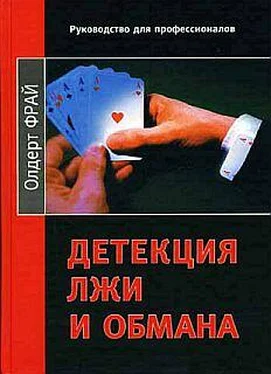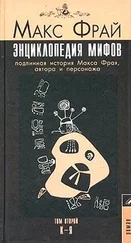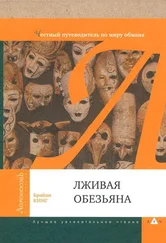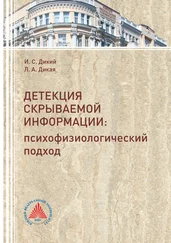Waltman, J. L. (1983). Nonverbal communication in interrogation: some applications. Journal of Police and Science Administration, 11, 166–169.
Watson, D. C. & Sinka, В. K. (1993). Individual differences, social arousal and the electrodermal detection of deception. Personality and Individual Differences 15, 15–80.
Wells, G. L. & Leippe, M. R. (1981). How do triers of fact infer accuracy of eyewitness identification? Using memory of peripheral details can be misleading. Journal of Applied Psychology, 66, 682–681.
Wells, G. L. & Loftus, E. F. (1991). Commentary: is this child fabricating? Reactions to a new assessment technique. In J. Doris (Ed.), The suggestibility of children's recollections: Washington, DC: American Psychological Association, 168–111.
West, I. (1992). Decision-making in the detection of deception. Paper presented to the British Psychology Society, Division of Criminological and Legal Psychology. Harrogate, March 1992.
Westcott, H. L., Davies, G. M. & Clifford, B. R. (1991). Adults' perceptions of children's videotaped truthful and deceptive statements. Children and Society, 5,123–135.
Wilson, D. S., Near, D. С & Miller, R. R. (1998). Individual differences in Machiavellianism as a mix of cooperative and exploitative strategies. Evolution and Human Behavior, 19, 203–212.
Winkel, F. W & Vrij, A. (1995). Verklaringen van kinderen in interviews: Een experimenteel onderzoek naar de diagnostische waarde van Criteria Based Content Analysis. Tijdschrift voor Ontwikkelingspsychologie, 22,61–14.
Winkel, E W, Vrij, A., Koppelaar, L. & Van der Steen, J. (1991). Reducing secondary victimisation risks and skilled police intervention: enhancing the quality of police rape' victim encounters through training programmes. Journal of Police and Criminal Psychology, 1,2-11.
Woodall, W G. & Burgoon, J. K. (1983). Talking fast and changing attitudes: a critique and clarification. Journal of Nonverbal Behavior, 8,126–143.
Young, M. J. & deTurck, M. A. (1996). The effects of stress and coping on truthful and deceptive communication. Unpublished manuscript.
Yuille, J. С(1988a). A simulation study of criteria-based content analysis. Paper presented at the NATO advanced study institute on credibility assessment, Mara-tea, Italy, June 1988.
Yuille, J. С (1988b). The systematic assessment of children's testimony. Canadian Psychology, 29,241262.
Yuille, J. С & Cutshall, J. (1989). Analysis of statements of victims, witnesses, and suspects. InJ. С Yuille (Ed.), Credibility assessment. Dordrecht: Kluwer, 115–191.
Zaparniuk, J., Yuille, J. С & Taylor, S. (1995). Assessing the credibility of true and false statements. International Journal of Law and Psychiatry, 18,343–352.
Zuckerman, M. & Driver, R. E. (1985). Telling lies: verbal and nonverbal correlates of deception. In A. W Siegman & S. Feldstein (Eds), Multichannel integrations of nonverbal behaviors. Hillsdale, NJ: Lawrence Erlbaum, 129–141.
Zuckerman, M., DeFrank, R. S., Hall, J. A., Larrance, D. T. & Rosenthal, R. (1919). Facial and vocal cues of deception and honesty. Journal of Experimental Social Psychology, 15, 318–396.
Zuckerman, M., DePaulo, В. M. & Rosenthal, R. (1981). Verbal and nonverbal communication of deception. In L. Berkowitz (Ed.) , Advances in experimental social psychology. Vol. 14. New York: Academic Press, 1-57.
Zuckerman, M., Koestner, R. & Alton, A. O. (1984). Learning to detect deception. Journal of Personality and Social Psychology, 46, 519–528.
Zuckerman, M., Koestner, R. & Colella, M. J. (1985). Learning to detect deception from three communication channels. Journal of Nonverbal Behavior, 9,188–194.
Zuckerman, M., Koestner, R. & Driver, R. (1981). Beliefs about cues associated with deception. Journal of Nonverbal Behavior, 6,105–114.
Чтобы обеспечить право человека на анонимность, случай намеренно описан расплывчато.
Существует очень простой способ проверки того, насколько успешны таможенные офицеры в задержании контрабандистов. Попросите их произвольно выбрать и остановить 100 человек и указать по отношению к каждому туристу, пытается ли он, по их мнению, провезти контрабанду. Затем обыщите эти 100 человек, и вы узнаете, в какой степени интуиция офицера оказалась верной.
Адаптирована по версии Стеллера и Кёнкена (Steller & Kdmken, 1989).
Адаптировано по версии Стеллера (Steller, 1989).
Говоря о лабораторных экспериментах, можно использовать термины «лжецы» и «говорящие правду»; Но что касается полевых исследований, то в этом случае использование термина «лжец» недопустимо, так как мы не знаем наверняка, намеренно ли этот человек говорит неправду.
Вероятно, противодействия возможно выявить при помощи ответных противодействий. Хонтс, Раскин и Кирхер (1981) прикладывали электроды на область эпигастрия и к височной мышце и могли верно выявить 90 % испытуемых, использующих противодействия.(Lykken, 1998, p. 3).











